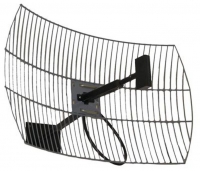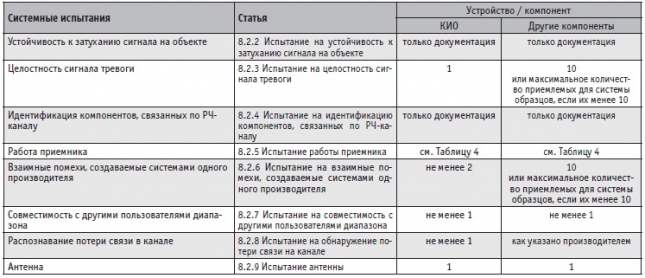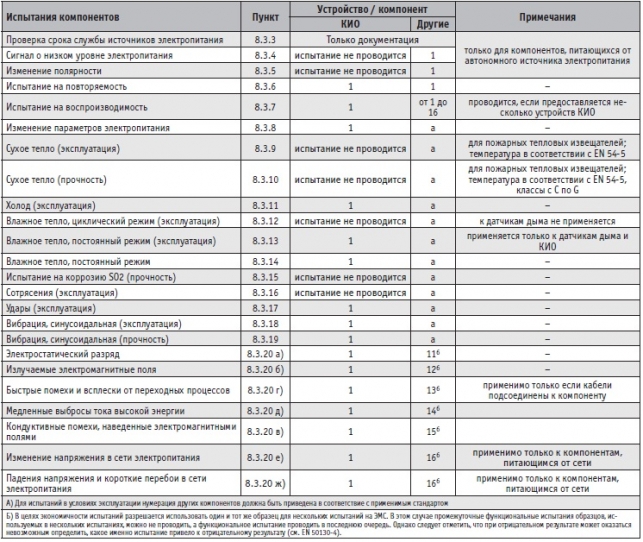Все про видеонаблюдение
Все про умный дом
Все о пожарной безопасности
Сейчас читают
 Как ускорить и смотреть ютуб без тормозов и замедленияЕсли Вы на этой странице, то Вам, скорее всего, […]
Как ускорить и смотреть ютуб без тормозов и замедленияЕсли Вы на этой странице, то Вам, скорее всего, […] 10 лучших прогрессивных языков программирования для разработки мобильных приложенийЗнаете ли вы, что мобильные приложения — это не только […]
10 лучших прогрессивных языков программирования для разработки мобильных приложенийЗнаете ли вы, что мобильные приложения — это не только […] 6 важных особенностей, которые следует учитывать при строительстве нового домаСтроительство нового дома – это уникальная возможность […]
6 важных особенностей, которые следует учитывать при строительстве нового домаСтроительство нового дома – это уникальная возможность […]
Гороскоп на Сегодня

Since January 1, 2010, GOST R 53325-2009 «FIRE-FIGHTING EQUIPMENT. TECHNICAL MEANS OF FIRE-FIGHTING AUTOMATION has become mandatory for use.
General technical requirements. Test methods».
In essence, this standard united fire safety standards (FSS), which defined the requirements for the corresponding fire-fighting devices.
That is, in addition to general terms and references to additional GOSTs used in testing, the structure of the new standard became similar to the European standard EN 54, which defines similar requirements in the European Community.
It is enough to compare the points contained in the two standards. In GOST there is point 4.7 «Point optical-electronic smoke fire detectors» and point 4.8 «Ionization smoke fire detectors», and in EN there is part 7: «Smoke detectors — point detectors using diffuse light, transmitted light or ionization».
Does this mean harmonization of standards?
Not at all.
Why?
At least because there is a difference in the testing requirements, and this mainly applies to testing on test fire sources.
The GOST has made the first step in introducing test data, but this is not yet enough to talk about the quality characteristics of fire detection by fire alarms.
Within the framework of this article, we will try to compare these two standards in more detail. I will immediately make a reservation — a full citation of the standards is not the purpose of this article. Here, an attempt was made to understand the difference. The most obvious differences are visible in relation to the use of the radio channel.
Let's start with the fact that since 2008, Part 25 «Radio-Using Components» has been introduced into EN, which sets out the requirements specifically for the radio-channel part of fire alarm systems.
There is simply no such section in GOST.
This European standard was approved by the European Committee for Standardization (CEN) on January 20, 2008.
The absence of a section in itself may not be critical.
Let's compare the requirements of the two standards. Let's start with the simple — with terms and definitions.
There are several terms in GOST that explicitly or implicitly refer to the radio channel: «3.34 communication line: Wires, cables, optical fiber, radio channel or other means of transmitting signals that ensure interaction and exchange of information between components of the fire alarm system.»
«3.15 fire alarm powered by an autonomous source: An alarm in the body of which a power source (battery, accumulator, etc.) is installed» — do not confuse with an autonomous alarm.
That's basically it.
What is in the European standard?
The terminology does not claim to be complete data on the physics of the wireless data transmission process, but in any case it is broader than in GOST: it provides basic definitions of what an antenna is, a dedicated range, attenuation, etc.
But, what is most interesting, if the European standard directly provides references to the norms regulating the activity on radio transmission, namely EN 300113-1 V 1.4.1:2002 «Electromagnetic compatibility and spectrum parameters — (PRS) — Land mobile communications — Radio equipment intended for the transmission of data (and (or) speech) using modulation with a constant or variable envelope and having a facility for connection to an antenna — Part 1: Specifications and measurement methods» and EN 300220*1 V 1.3.1:2000 «Electromagnetic compatibility and spectrum parameters — (PRS) — Short-range devices — Radio equipment intended for use in the radio frequency range 25 MHz to 1000 MHz with power levels up to 500 mW — Part 1: Specifications and test methods», then there are no such references in GOST.
|
Table.1 |
So, when developing wireless SPS, there is no need to be guided by anything?!
Now let's try to compare the requirements for wireless devices.
All GOST requirements are in the section «Fire alarm control devices.
Fire alarm control devices», and they are quite difficult to single out from the general description, unlike EN. But this can be done by searching.
These are paragraphs 7.1.13, which sets out the requirements for technical means of fire protection and determines the addressability and two-way data exchange, paragraph 7.1.14, which determines the addressability and analogy of wireless systems, and paragraph 7.2.1.2, which specifies the requirements for addressable systems (Table 1).
The fact that the requirements are listed, one might say, in the system section is understandable, since the requirements for individual components (say, for the PI) should not differ, regardless of the type of communication line — wired or wireless.
Although the logic of the European standard seems more reasonable — there are requirements for the PI and there are additional requirements for the wireless part.
It is expressly stated that the requirements for radio channel devices must be applied together with the requirements of the relevant part of EN 54, i.e. wireless thermal PI must also comply with the requirements of EN 545.
On the other hand, what difference does it make how the requirements are stated? The main thing is that there were no such requirements before.
Now they have appeared. This is already progress.
According to GOST, wireless systems must be addressable (which is understandable) and ensure two-way data exchange between themselves.
There are no such requirements in EN.
Without further ado, EN has prescribed requirements for the presence of an identification code in a radio component, which allows it to be uniquely identified and prescribed in a specific SPS.
Again, such a requirement seems more reasonable today, since in wireless systems the address is rather a kind of system attribute, which simply replaces a complex identification code with a simpler and more understandable address, for example, a PI address.
The same applies to the protocol — it can be any, the main thing is that the system components use a transmission protocol that prevents the loss of alarm messages.
Also in EN there are minimum requirements for the radio channel, such as a reserve for signal attenuation at the facility, selectivity of the adjacent channel, etc.
There are no such requirements in GOST at all, everything is left to the mercy of the manufacturer — «The reliability of information transmission over radio channel communication lines must be ensured by technical solutions determined by the system manufacturers.
These technical solutions may include the ability to switch to backup frequency channels, use special exchange protocols, and other methods of increasing the reliability and validity of communication systems.»
You must agree that this looks rather strange.
If we take the requirements for time indicators, they are practically identical — in the event of loss of communication with a component, the system must issue a message within 300 s.
In case of alarm – in accordance with EN54 standards related to this type of component.
Also in EN54 part 25 in paragraphs 4.2.7 and 5.2.2 there are a number of requirements for the design of radio channel equipment, which are not mentioned in GOST. 4.2.7 Antenna.
The antenna or antenna cable must be designed in such a way that they can be disconnected only by opening the component housing or using a special tool provided by the manufacturer.
 |
| Table.3 Schedule of system tests |
 |
| Table.4 Receiver operation test procedure |
 |
| Table.6 Component testing schedule |
5.2.2 The component must be designed in such a way that its removal from the base and (or) mounting location is recognized as a malfunction with the corresponding message. Interesting discrepancies relate to power supply.
The GOST clearly states that there must be two power sources, the main one and the backup one, which must be located inside the component housing.
And here is how the main requirements are set out in Part 25 of the European standard: 5.3.1 The components must be powered by the following equipment:
a) an autonomous power source, such as the main battery or
b) power sources in accordance with EN 54*4. NOTE: In accordance with EN 54*2, the CIO must be powered by power sources that meet the requirements of EN 54*4.
5.3.2 All components powered by an independent power source shall comply with the following requirements:
a) the independent power source shall be located in the component housing;
b) the independent power source shall ensure normal operation of the component for at least 36 months.
5.3.3 All components powered by an independent power source shall be capable of transmitting a fault signal (low power supply level) before the power source fails.
The following conditions shall be taken into account:
a) the component shall be capable of generating and transmitting a fault signal within 60 min after replacing a working or new power source with a prepared power source, which is a discharged power source that has reached the end of its service life;
b) the component shall be capable of operating normally when activated by a prepared power supply, which is a discharged power supply that has reached the end of its service life;
c) components shall maintain an alarm state and/or another activated state for at least 30 min (if the alarm state is not applicable).
5.3.4 Failure of the power supply shall be indicated as a fault signal in accordance with EN 54*2.
When using multiple power supplies for different functions of one component, a fault signal must be given for each power supply (see 5.3.3).
In other words, the European standard does not directly require two power supplies.
However, the more stringent requirements for the main power supply are quite clearly spelled out, in contrast to GOST, which only specifies the operating time of the component in standby mode.
The European standard also specifies a requirement for the polarity of the component power supply; there is no similar requirement in GOST.
5.3.5 The component must be designed in such a way that changing the polarity is impossible, or otherwise the polarity of the power supply contacts must be detectable, and its change must not lead to damage to the component.
And most importantly, the GOST does not contain a test methodology for radio channel equipment, in other words, it turns out that the requirements for radio channel equipment appeared in the GOST, but how these requirements are verified during certification tests remains questionable. Below are the requirements described in EN 54*25 for testing.
8.2.1 Schedule of system tests. The sequence of tests and the number of samples are given in Table 3. 8.2.5 Testing the receiver.
Comparison of marking requirements
According to the European standard, the manufacturer is responsible for affixing the CE marking, indicating the EU certificate of conformity number and the number of the product certification body.
It is mandatory to indicate the European standard and the relevant part of this standard. That is, for a smoke detector, it is necessary to indicate EN 54*7 (Part 7: Smoke detectors).
For the wireless version of such a detector, it is also necessary to indicate EN 54*25 (Part 25: Components using radio channels).
We have a mandatory requirement to apply the GOST R mark, but identification of the certification body and GOST requirements is not required. They should be reflected only in the certificate itself.
The requirements of the European standard seem more reasonable, since the sections of the standard to which this product complies will be indicated on the product (and in the certificate itself).
And so today a situation is possible when a wireless PI can fully comply with the GOST requirements as a smoke PI, but not comply with the requirements for a radio channel.
It is impossible to find a difference in the certificate and marking itself.
In conclusion, I would like to note that from a comparison of the two standards GOST R 53325_2009 and EN 54, it is clear that the requirements of the European standard seem more reasonable and logical.
Using radio channel equipment as an example, the discrepancy between the standards generally raises a lot of questions.
It is also worth paying attention to the fact that the introduction to EN 54_25 states that the purpose of this standard is to define the requirements for equipment and tests that will allow wireless fire detection systems to be at least as effective and stable as wired fire detection systems and components that meet the current requirements for wired systems in EN standards.
And nowhere does it say that radio channel fire detection systems are better than wired ones.
A. Atamanov, «System Sensor Fire Detectors»
magazine «Security Algorithm» No. 6, 2010






Добавить комментарий